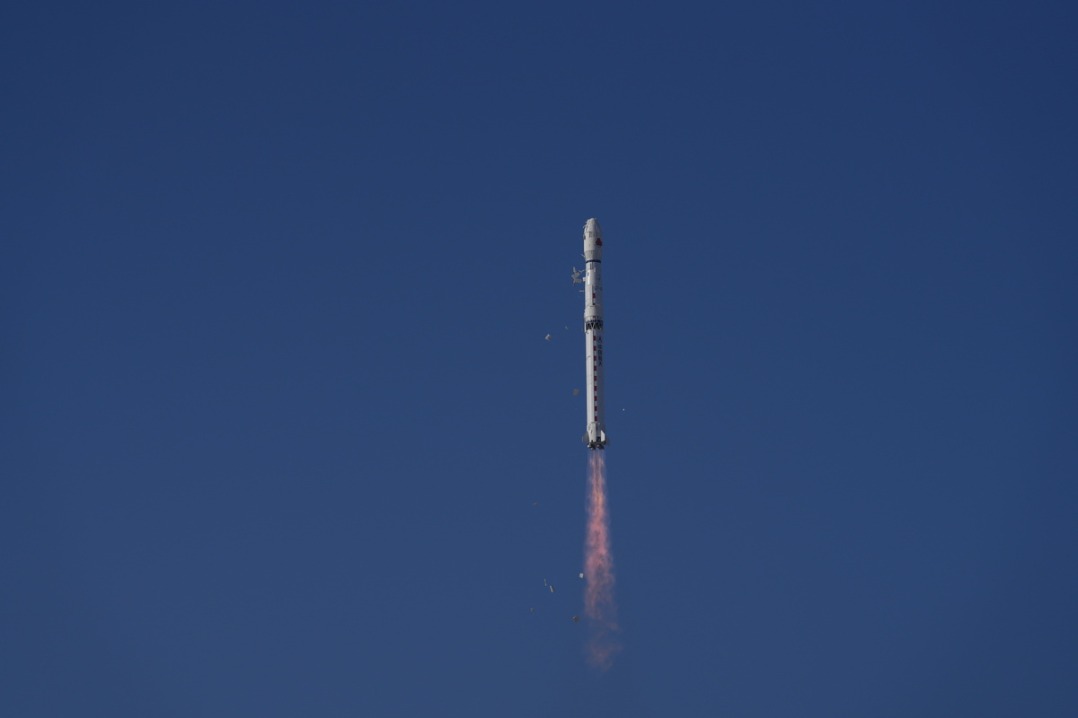Trade-ins, upgrades set to stimulate consumption

Program: Upgrades expected to improve efficiency
China's latest efforts to push ahead large-scale equipment upgrades and consumer goods trade-ins will promote investment and boost consumption in a focused manner. This in turn will enhance the country's internal growth drivers for fulfilling this year's economic targets amid rising external uncertainties and dwindling global demand, said experts and executives.
By promoting the production capacity of businesses with equipment upgrades and improving the quality of consumer goods by allowing the return of old appliances as part payment for new ones, the initiative will help foster innovation-driven and environment-friendly development with a market-oriented approach, they added.
While equipment upgrades are primarily seen as investment activities, the trade-in program focuses on encouraging consumers, including individuals and households, to make more purchases, said a detailed plan issued on Wednesday by the State Council, China's Cabinet.
According to the plan, sectors such as manufacturing, agriculture, construction, transportation, education, tourism and healthcare are expected to see investment in equipment surge by over 25 percent by 2027, compared with the figures recorded last year. By 2027, the country also aims to double the volume of scrapped vehicles collected compared with 2023, witness a 45 percent increase in secondhand car transactions, and achieve a 30 percent growth in the recycling of discarded household appliances, the plan said.
China will also improve the energy-saving, environmental and technical standards of traded products, to ensure the initiative contributes to the country's carbon emission and pollution reduction efforts while improving the quality of the products at the same time, according to the plan.
Expanding investment in manufacturing and boosting domestic demand are emerging as the new pillars for stable economic growth, said Song Xuetao, chief macroeconomy analyst at TF Securities.
In addition, traditional stimulus policies, which relied upon sheer increases in purchases of production equipment and expenditure on household items, have suffered from reduced effectiveness due to various factors, such as high corporate leverage and market saturation of durable consumer goods, Song said.
However, as the Chinese economy expands, the growth and upgrading of some major industries, such as equipment and automaking, have produced substantial demand for more equipment and product renewal, which requires policy support, Song added.
Zhou Yunjie, chairman and CEO of Chinese home appliances giant Haier Group, said the low efficiency of some existing equipment has hampered productivity and inhibited industrial capacity to meet the shifting market demand.
China's industrial sector is on the cusp of a transformative shift toward high-end development through equipment upgrades. Haier will leverage the opportunity to update its machinery and technologies to enhance the intelligence, automation, and informatization levels of its factories to maintain its competitive edge in the rapidly evolving consumer goods market, Zhou added.
According to estimates by the Bank of China Research Institute, the upcoming wave of equipment upgrades will contribute to an increase of 1.2-1.5 percentage points in overall fixed-asset investment and drive GDP growth by some 0.4 percentage point.
The potential demand for replacing outdated and inefficient products has reached a critical stage, Wang Wentao, the commerce minister, said at a news conference. The number of registered passenger vehicles reached 336 million last year, while the ownership of household appliances surpassed 3 billion units, with a significant portion of products having long service lives and higher energy consumption, he added.
The anticipated demand value generated by the trade-in policy will be between 210.9 billion yuan (29.3 billion) and 629.3 billion yuan, which will in turn stimulate GDP growth by approximately 0.16 to 0.5 percentage points, according to the institute.
While the benefits of equipment upgrades and trade-in programs are evident in terms of improved efficiency, productivity and technological advancements, many enterprises and individuals might still be hesitant to implement the initiative, said Luo Zhiheng, chief economist at Yuekai Securities.
The hesitancy stems from the perception that the current equipment is still functional. Additionally, the financial burden associated with equipment renewal acts as a deterrent for many firms, Luo said, emphasizing that appropriate fiscal, financial and taxation incentives should be weighed toward catalyzing their willingness.
- Former senior official of Ningxia sentenced to death
- Development program narrows urban-rural gap in Guangdong
- Wuxi Winter Bazaar creates cross-cultural gathering
- Expressway service area featuring a natural hot spring to open soon in Guangdong
- Former Ningxia political advisor sentenced to death for bribery
- Former senior official of Jiangxi expelled from CPC





































